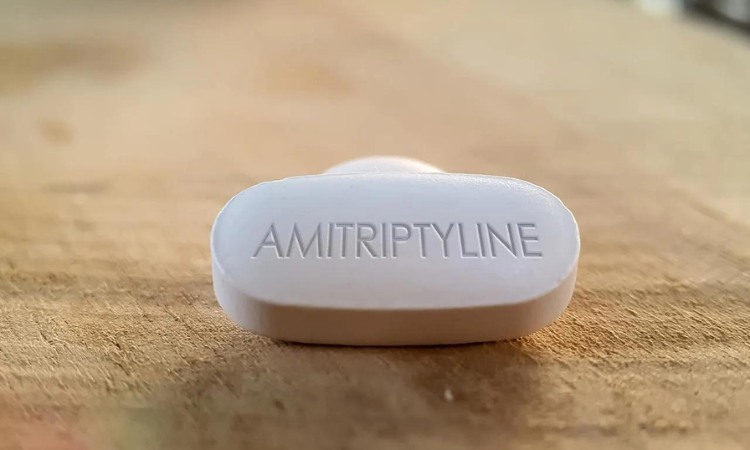In today’s fast-paced world, the struggle to stay focused and manage attention levels can be overwhelming, especially for individuals with attention deficit hyperactivity disorder (ADHD). But what if there was a way to empower yourself with self-regulation techniques that are natural and don’t rely on medication?
Enter biofeedback for ADHD, a cutting-edge approach that harnesses the power of technology to help individuals with ADHD gain greater control over their minds and bodies.
Biofeedback is a non-invasive therapy that monitors physiological signals, such as heart rate, breathing, and brainwaves (often dysregulated in individuals with ADHD), and provides real-time feedback to the individual. By learning to interpret and regulate these signals through personalized training, individuals with ADHD can become more aware of their bodily responses and develop strategies to enhance focus, manage stress, and improve overall well-being.
With a wide range of biofeedback tools and techniques available, from heart rate variability training to neurofeedback, individuals with ADHD have the opportunity to take an active role in their treatment and discover personalized strategies for self-regulation. By harnessing the power of their own biology, they can unlock their full potential and lead more fulfilling lives.
If you’re looking for natural and empowering ways to manage your ADHD symptoms, join us as we explore the world of biofeedback and discover how it can revolutionize your self-regulation journey. Remember, you have the power to take control of your well-being through the biofeedback for ADHD approach.
Exploring ADHD and its Influence on Everyday Functioning
ADHD, known as Attention Deficit Hyperactivity Disorder, is a neurodevelopmental condition impacting individuals across various age groups. It can have a profound impact on various aspects of daily life, influencing everything from work and school to relationships and overall well-being. Let’s delve into a comprehensive understanding of ADHD and explore its multifaceted impact on our day-to-day existence.
1. Attention Challenges:
- Individuals with ADHD often struggle with sustaining attention on tasks, leading to difficulties in focusing on work or academic assignments. This can result in decreased productivity and a sense of frustration.
2. Impulsivity:
- Impulsivity is a hallmark of ADHD, manifesting in hasty decision-making and actions without fully considering the consequences. This can affect personal and professional relationships, as well as overall decision-making abilities.
3. Hyperactivity:
- While not everyone with ADHD exhibits hyperactivity, it can be a significant factor for some. Hyperactive behaviors may include restlessness, constant movement, and difficulty staying still, impacting both work and social environments.
4. Organization and Time Management:
- Challenges in organizational skills and time management are common for individuals with ADHD. Meeting deadlines, keeping track of schedules, and maintaining an organized living or working space can be ongoing struggles.
5. Emotional Regulation:
- ADHD can influence emotional regulation, leading to mood swings, heightened emotional responses, and difficulties in managing stress. These emotional challenges can impact relationships and overall mental well-being.
6. Academic and Occupational Impact:
- In academic settings, ADHD can affect learning, task completion, and overall academic performance. In the workplace, challenges may arise in meeting deadlines, staying organized, and sustaining focus during meetings or tasks.
7. Social Interactions:
- Difficulties in social interactions can be a consequence of ADHD, with individuals sometimes struggling to maintain attention during conversations, follow social cues, or regulate their behavior in social settings.
8. Coexisting Conditions:
- It frequently coexists with other conditions like anxiety, depression, or learning disorders. Managing these coexisting conditions adds an extra layer of complexity to daily life.
Understanding the impact of ADHD on daily life is crucial for individuals, their families, and the broader community. Recognizing these challenges allows for the development of effective coping strategies, interventions, and support systems to help individuals with ADHD thrive in various aspects of their lives.
What is biofeedback and how does it work?
Biofeedback, when it comes to ADHD, is a fascinating and potentially empowering technique for gaining self-regulation. In essence, it’s a process of learning to control your body’s responses by becoming aware of them in real-time.
Here’s how it works:
- Monitoring Physiology: Specialized equipment tracks specific bodily functions like heart rate, breathing, brainwaves, muscle tension, or skin temperature.
- Real-Time Feedback: This equipment translates these signals into visual or auditory feedback, like changing visuals on a screen or sounds that adjust based on your responses.
- Learning and Regulation: By observing the feedback and understanding how your thoughts, emotions, and actions affect your physiology, you gradually learn to regulate those responses. For example, seeing your heart rate increase when feeling stressed might inspire you to take deeper breaths, calming your body and lowering your heart rate.
- Building Skills: With repetition and practice, you develop skills to consciously influence these responses, leading to improved focus, reduced impulsivity, and better emotional management.
Think of it like training your brain to understand and control its own activity. It’s not about forcing control, but rather developing awareness and learning to respond differently to internal and external stimuli.
Key Benefits for ADHD:
- Natural approach: Biofeedback avoids medication and focuses on harnessing your body’s inherent ability to self-regulate.
- Personalized: Tailored to your individual needs and responses, making it a flexible and adaptable approach.
- Empowering: Equips you with the tools and skills to manage your ADHD symptoms independently.
- Improved focus: By learning to regulate brainwaves and other physiological responses, you can enhance your ability to concentrate.
- Reduced impulsivity: Understanding your body’s reactions to stimuli can help you make more deliberate choices.
- Better emotional management: Biofeedback can equip you with strategies to manage stress and emotional fluctuations.
Remember, biofeedback is not a quick fix, but rather a commitment to learning and practicing new skills. However, if you’re looking for a natural and empowering way to manage your ADHD symptoms, it’s worth exploring!
How to get started with biofeedback for ADHD
Here’s a guide to kick-starting biofeedback therapy for ADHD:
- Consult your doctor: Before diving into any new treatment, including biofeedback, consulting with your doctor is crucial. They can assess your suitability for biofeedback and provide guidance tailored to your specific needs.
- Seek a certified therapist: Look for a biofeedback therapist certified by the Biofeedback Certification International Alliance (BCIA). This certification ensures adherence to professional standards in biofeedback therapy.
- Schedule an initial session: Arrange an initial consultation with the therapist to discuss your treatment goals and assess your requirements. They’ll explain how biofeedback works and what to anticipate during therapy.
- Begin treatment: Typically, therapy comprises one to two sessions per week over several weeks. During sessions, the therapist will monitor your body’s responses using sensors and guide you in employing relaxation techniques like deep breathing and muscle relaxation.
- Practice at home: Consistent practice of relaxation techniques at home is essential for enhancing results and sustaining progress between therapy sessions.
While biofeedback can be an effective strategy for managing ADHD symptoms, it’s essential to maintain realistic expectations. While it doesn’t offer a cure, it can aid in symptom management and overall improvement in quality of life.
Conclusion: Empowering yourself with biofeedback for ADHD management
In the realm of managing ADHD, biofeedback ADHD therapy emerges as a beacon of hope, offering individuals the tools to empower themselves through self-regulation techniques. By delving into the intricacies of biofeedback, individuals unlock the potential to harness their body’s responses and navigate the challenges of ADHD with greater resilience and control. As they embark on this transformative path, guided by the expertise of certified practitioners, individuals can cultivate a deeper understanding of their unique needs and capabilities. Through consistent practice and dedication, biofeedback for ADHD becomes more than just a treatment—it becomes a catalyst for personal growth and empowerment.
For further guidance and information on how to embark on this journey of self-discovery and empowerment, connect with us at Relevance Recovery.









